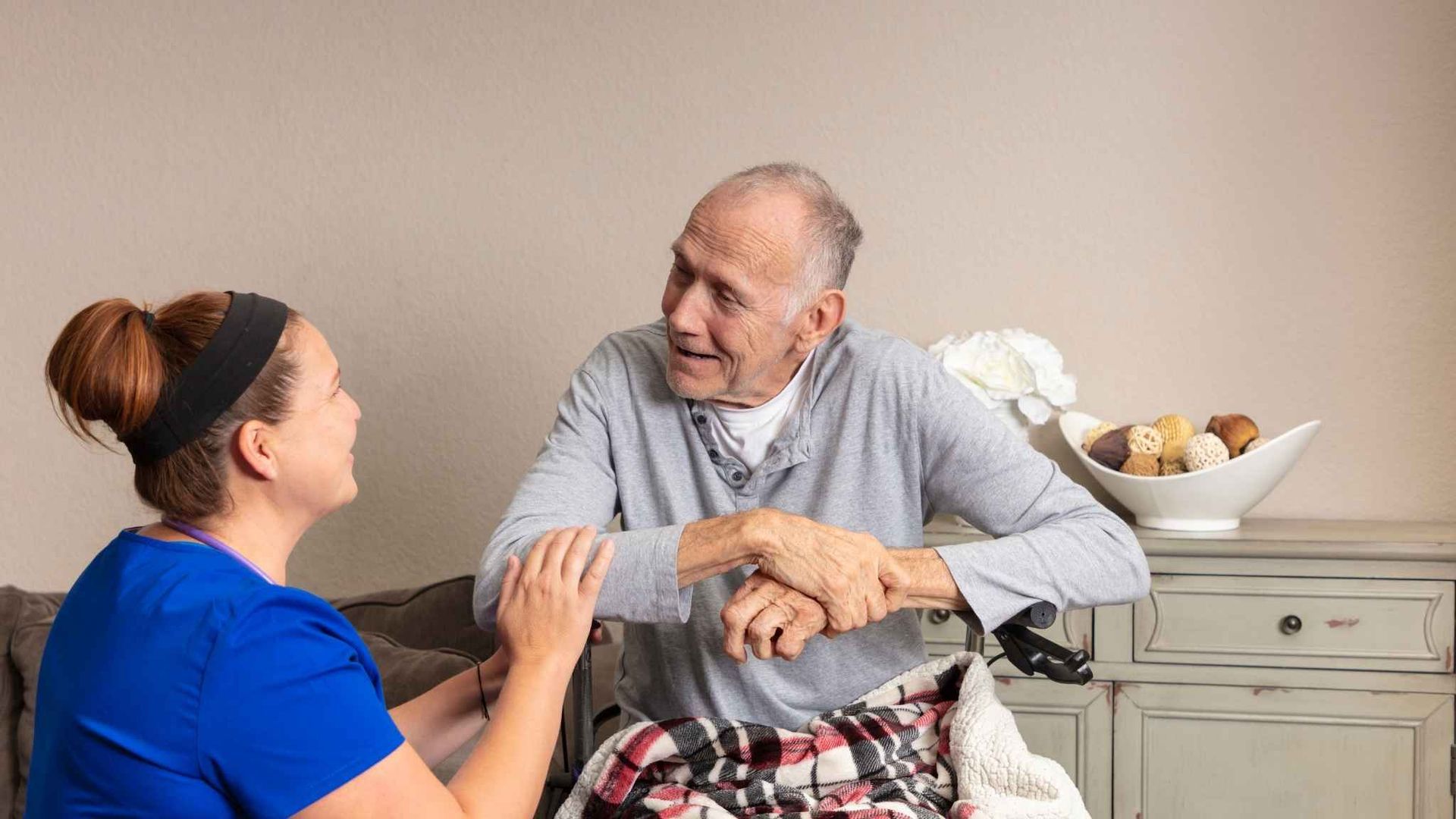What is the Difference Between Home Health and Hospice?
Caring for a loved one comes with many important choices, one of the most common is understanding the difference between home health and hospice care.
While both services take place in the comfort of home, they meet very different needs. Home health typically supports recovery from an illness or injury with medical treatment and therapy. Hospice focuses on comfort and quality of life for individuals facing a terminal diagnosis.
Knowing the purpose and timing of each can help you choose care that truly fits your loved one’s stage and goals.
In this guide, we'll break down the difference between home health and hospice, including who qualifies, when to consider transitioning, and how to choose the care that feels right for your family.
What is Home Health Care?
Home health care provides skilled medical support at home for individuals recovering from illness, injury, or surgery, as well as those managing chronic conditions. It focuses on helping patients regain independence and maintain their health without needing to stay in a hospital or facility.
Services may include wound care, medication management, physical or occupational therapy, and regular monitoring by licensed medical professionals.
To qualify, a patient must be considered homebound (meaning they have difficulty leaving home without assistance) and have a doctor’s order confirming that home health care is medically necessary. Medicare coverage also requires that the care is part of a doctor-supervised treatment plan.
What is Hospice?
Hospice care is comfort-focused care for patients with a terminal illness who are no longer seeking to cure their illness. Instead, it shifts the focus onto improving the patient’s comfort, reducing pain, and providing emotional, spiritual, and physical support during that time.
The primary goal of hospice care is to make the final stages of life as peaceful and dignified as possible. This is usually done by a core team of professionals such as nurses, social workers, chaplains, aides, and volunteers.
Hospice is usually available for patients who have a prognosis of six months or less to live if their illness follows its natural course. It can be delivered at the patient’s home, an assisted living facility, or dedicated hospice care centers.
When to Transition from Home Health Care to Hospice
There comes a time when your loved one’s condition or goals may shift from recovery to comfort. Understanding what signs can tell you when to transition from home health to hospice is important to give the patient the right care at the right time.
Several signs may indicate that it’s time to move from home health care to hospice care, such as:
- Frequent hospital visits
- Uncontrolled pain or symptoms despite recovery efforts
- Decline in mental alertness/memory/thinking
- Or a clear desire from the patient or their family to focus on comfort rather than curing their illness
As care needs evolve, so does the choice of care methods between home health care and hospice care. Transitioning to one or the other does not mean giving up; it just means choosing care that focuses on your loved one’s needs and goals.
Differences Between Home Health and Hospice
Understanding the difference between home health and hospice care means looking at their purpose, treatment approach, eligibility, and the type of support provided. Here’s how they compare:
Goals of Care
- Home health care supports short-term recovery, rehabilitation, and condition management, often after surgery, illness, or injury.
- Hospice care focuses on comfort and quality of life for patients in the final stages of a terminal illness.
Treatment Types
- Home health offers curative and rehabilitative treatments aimed at improving function and independence.
- Hospice provides palliative care only, which manages pain and symptoms without aiming to cure the illness.
Eligibility
- Home health care requires:
- The patient is to be homebound
- A doctor’s certification of medical necessity
- A doctor-supervised care plan
- Hospice care is for:
- Patients with a terminal diagnosis
- A life expectancy of six months or less (if the condition runs its normal course)
- Those who choose comfort care over curative treatment
Duration of Care
- Home health is typically short-term and ends when recovery goals are met.
- Hospice has no set time limit, continuing as long as eligibility requirements are met.
Who Provides the Care
- Home health care teams may include nurses, physical or occupational therapists, and aides, all working under a doctor’s treatment plan.
- Hospice care teams include nurses, social workers, aides, chaplains, and volunteers, addressing physical, emotional, and spiritual needs.
Medicare Coverage Differences
Medicare covers both home health and hospice care, but the details of that coverage vary based on the type of support your loved one needs. Here's a simple breakdown:
| Category | Home Health Care | Hospice Care |
|---|---|---|
| Medicare Coverage | Covered under Medicare Part A (Hospital Insurance) and/or Medicare Part B (Medical Insurance) | Fully covered under Medicare Part A (Hospital Insurance) |
| Eligibility | Patient must be: – Homebound (difficulty leaving the house without help) – Under a doctor’s care – Medically require skilled services | Patient must be: – Certified by a physician with a terminal illness and a life expectancy of six months or less (if illness runs its natural course) – Willing to receive palliative (comfort-focused) care instead of curative treatment |
| Services Offered | – Skilled nursing care (e.g., wound care, patient and caregiver education) – Medical social services – Medical equipment and supplies | – Physician and nursing care – Pain and symptom management – Medications related to the terminal illness – Medical equipment |
| Cost | – $0 for all covered home health services – 20% of the Medicare-approved amount for medical equipment | – $0 for hospice services – Up to $5 for prescription symptom control drugs – 5% of the Medicare-approved amount for inpatient respite care |
| Duration | As long as the patient meets eligibility and a doctor certifies the need | Two 90-day periods, then unlimited 60-day periods as long as the patient remains eligible and is recertified by a physician |
When to Consider Home Health or Hospice?
Families should consider home health care for their loved ones if they want to target their recovery or rehabilitation after an illness, surgery, injury, or manage a chronic illness. Home health care is best for those who want a short-term way to regain their independence or manage their needs with the help of skilled professionals.
Choosing hospice care, on the other hand, should be considered when a patient has been diagnosed with a terminal illness and is looking into palliative (comfort-focused) care instead of curative treatment. Hospice is appropriate for patients in the late stages of diseases such as cancer, end-stage dementia, or severe organ failure.
Regardless of the situation, it’s important to begin conversations with physicians or care teams as early as possible regarding the difference between home health and hospice. These discussions help families understand their options, plan for the future, and ensure that the patient’s goals and choices are honored.
Get Compassionate Hospice Support When It Matters Most
Going through end-of-life decisions can be difficult, but the right support and knowledge can bring peace in the middle of a difficult time. Understanding your loved one’s goals in end-of-life care helps ensure their comfort, dignity, and peace in their final stages of life.
Here at Valley Oaks Hospice, we offer personalized support for families every step of the way. Whether you’re seeking information about hospice services, need help with a care plan, orwant emotional support, our dedicated team is here for you.
Reach out today to learn how we can provide your loved ones with the right care at the right time.












